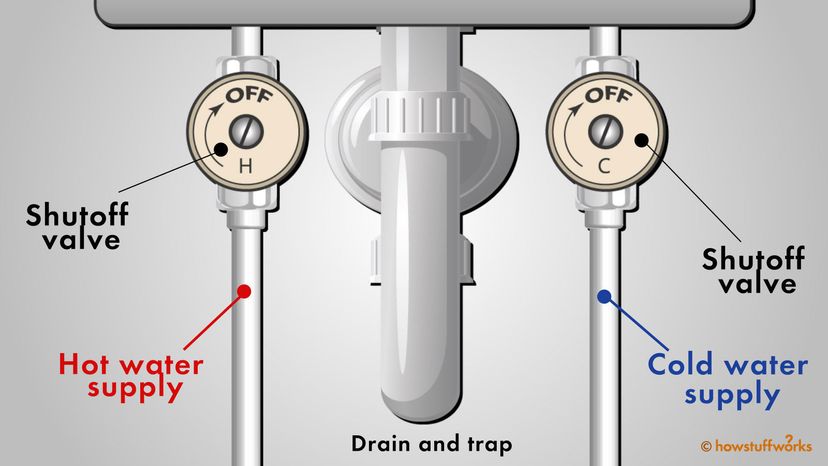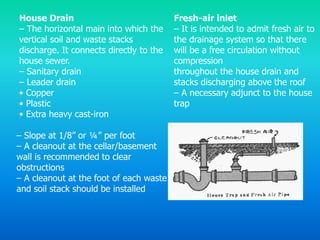Alexander Plumbing And Remodeling - The Facts
8 Simple Techniques For Alexander Plumbing And Remodeling
Table of ContentsThe 15-Second Trick For Alexander Plumbing And Remodeling6 Easy Facts About Alexander Plumbing And Remodeling Shown10 Easy Facts About Alexander Plumbing And Remodeling ExplainedHow Alexander Plumbing And Remodeling can Save You Time, Stress, and Money.Top Guidelines Of Alexander Plumbing And RemodelingAll About Alexander Plumbing And RemodelingExcitement About Alexander Plumbing And Remodeling
If you see that your inner wall surfaces around the pile show up to be wet, your plumbing pile can be leaking. If you discover a horrible scent in your home, it might show a dripping pipes stack.But in case of leakages, these hazardous gases can create a nasty odor in your house - Alexander Plumbing And Remodeling. A leak in your pipes stack and wet places on wall surfaces can lead to mold and mildew formation, damaging your wall surfaces. If you notice any type of corrosion on or around your plumbing pile, you must call a plumbing professional to analyze the circumstance
This is because, in addition to being unhygienic and troublesome, domestic pipes pile fixings and replacements can be very pricey. Relying on the plumbing stack you have and what the issue is, the repair services can differ in intricacy and expense. The expense of replacing a plumbing pile depends upon where it's placed in the home and exactly how big of a pile you need.
How Alexander Plumbing And Remodeling can Save You Time, Stress, and Money.
The cost likewise relies on the pile's dimension and the materials utilized to develop it, the labor charges, and any type of other unforeseen prices. On standard, anticipate to pay between $1,500 and $4,000 to change your plumbing pile, according to HomeAdvisor. A plumbing pile is an important component of any type of home's plumbing system.
Exhausted of slow-moving drain? Your plumbing pile may be the problem. Keep reading to read more about what a pipes pile is and why it is necessary to your home.

Pipes vents shield pipes catches. They do not make fixtures drain pipes quicker; in fact, they do the opposite. When it pertains to very first time home buyers, one of the least comprehended elements of a home seems to be plumbing vents. They're those pipes sticking up out of the roof that go through the attic room and with the rest of the residence.
Vents are frequently connected with each other inside the attic room, which enables fewer infiltrations in the roof covering. Allow me duplicate that: pipes vents prevent traps from being siphoned. They also protect against back-pressure on traps, however today the focus gets on siphoning. You may have heard that pipes fixtures will drain pipes quicker when they're vented correctly, yet it's not real.
A Biased View of Alexander Plumbing And Remodeling
You see the water glug out while air replaces it, and this makes it drain gradually. Once you place a hole in the top, water drains out extremely swiftly due to the fact that air can change the water as it drains pipes. This example does not hold water because the top of every plumbing fixture is large open.
The top of a sink is open. The top of a bathtub is open. If you desired to re-create the soft drink bottle example, you would certainly need to enclose the top of the plumbing component and then try to drain the water out. I can not believe of any instance where this could possibly take place.

Plumbing isn't almost getting water where you need itit's also about removing previously owned water safely. A plumbing drain system takes pre-owned water from components and relocates it to either the primary sewer line or septic container. And it must do so without contaminating clean water or dripping sewage. A water drainage system includes piping that communicates sewage, rain, or other fluid waste to a factor of disposal, either in the sewer system or sewage-disposal tank.
Some Known Details About Alexander Plumbing And Remodeling
Unlike the piping that brings water right into a building, the piping for a water drainage system is typically made of plastic or steel. Clean, fresh water originates from the road or an additional water service, such as a well, and is piped to every pipes fixture. Each component has a drainpipe line that accumulates secondhand water and waste, which streams to the main drain system through gravity.
Air vent piping offers air stress to help drain water circulation efficiently. Air vent pipes are affixed to the drainpipe lines at each component and protrude with the roofing. They are covered to keep pets and rainfall away, while permitting air to stream in. Traps in the drain accumulate unclean water and seal the pipeline to maintain sewer gases out of the structure.
S-traps are generally used in toilets while P-traps are utilized in sinks, bathtubs, and showers. Obstructed drains pipes take place as a result of the buildup of hair or other debris in the drainpipe. They can usually be gotten rid of by pouring drain cleaner down the tubes. If the cleaner does not dissolve the matter, a plumbing professional can snake the line or eliminate the P-trap to remove the particles.
A Biased View of Alexander Plumbing And Remodeling
A plumber can find the leakage by isolating the line, then see this website collect the pipeline to determine the dimension of the damages. Alexander Plumbing And Remodeling. They may be able to replace an area of the pipeline or repair it with a patch. Pipes isn't almost getting water where you require itit's likewise concerning eliminating secondhand water safely
And it needs to do so without polluting clean water or leaking sewer. A drain system consists of piping that communicates sewage, rainwater, or various other fluid waste to a point of disposal, either in the drain system or septic system. Its major purpose is to gather and get rid of wastewater and maintain sewage system gases out of the structure.
Pipes isn't nearly obtaining water where you need itit's likewise concerning eliminating used water securely. A plumbing water drainage system takes used water from components and relocate to either the main sewer line or pop over to these guys septic container. And it needs to do so without polluting clean water or leaking sewage. A water drainage system is composed of piping that conveys sewage, rainwater, or other fluid waste to a factor of disposal, either in the drain system or septic system.
Alexander Plumbing And Remodeling for Dummies

Vent piping gives air pressure to assist drain water circulation smoothly. Vent pipelines are connected to the drainpipe lines at each fixture and protrude via the roofing system. They are capped to keep animals and rain away, while enabling air to move in. Traps in the drainpipe collect filthy water and secure the pipe to keep sewage system gases out of the building.
They can often be removed by putting drain cleaner down the drainpipe. If the cleaner doesn't liquify the matter, a plumber can serpent the line or get rid of the P-trap to remove the debris.
A plumbing technician can find the leak by separating the line, then collect the pipeline to establish the size of the damage. They might be able to change an area of the pipeline or fix it with a patch. Plumbing isn't just concerning getting water where you need itit's likewise concerning getting rid of previously owned water securely.
All about Alexander Plumbing And Remodeling
And it has to do so without polluting tidy water or leaking sewer. A drain system includes piping that conveys sewer, rain, or various other fluid waste to a factor of disposal, either in the drain system or septic storage tank. Its main purpose is to collect and get rid of wastewater and keep drain gases out of the structure.